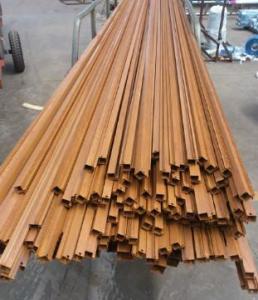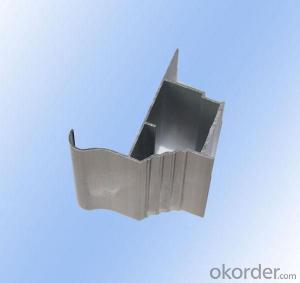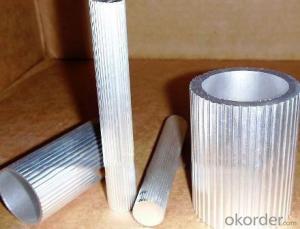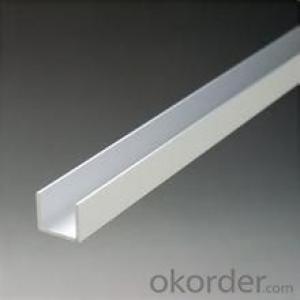Aluminum Extrusion Profiles California - Aluminium Round Tubes for Industrial Application
- Loading Port:
- Shanghai
- Payment Terms:
- TT OR LC
- Min Order Qty:
- 5 m.t.
- Supply Capability:
- 1000 m.t./month
OKorder Service Pledge
OKorder Financial Service
You Might Also Like
Name:aluminum tube&aluminum pipe
Material | 1000series,2000series,3000series.... |
Temper | T4,T5,T6 |
ISO Certificate | ISO9001:2008,SGS |
Size | The size are available in accordance with customers' options. |
Mill finish, Powder Coating, Anodizing, Sandblasting Anodizing, | |
Surface Processing | Cataphoresis, Sandblasting Cataphoresis, Wooden Print etc. |
Shape | round pipe |
Use | Building,Machine,Decoration,etc |
Color | Silver,Golden,Black,Red,Blue a,etc |
Packing: | Export sea worthy package |
Delivery: | Within 30 days after receiving 30%T/T of deposit or L/C |
MOQ: | 1 Metric Ton/Metric Tons |
Price terms: | FOB, CFR, CIF |
Payment terms: | T/T, L/C |
Application | aluminum pipe applies to Structural use ,roofing, commercial use, household appliance, industry, family etc |
Quality control: | a)Mill Test Certificate is supplied with shipment. b)Third party inspection is highly welcomed. |
- Q: Are aluminum profiles suitable for lighting fixtures?
- Yes, aluminum profiles are highly suitable for lighting fixtures. Aluminum is a versatile and lightweight material that offers several advantages for lighting applications. Firstly, aluminum profiles have excellent thermal conductivity, which means they effectively dissipate heat generated by the lighting fixtures. This is crucial as excessive heat can reduce the lifespan of the lighting components and affect their performance. Aluminum profiles help to maintain a cooler operating temperature, thereby enhancing the longevity and efficiency of the lighting fixtures. Secondly, aluminum profiles are corrosion-resistant, making them suitable for indoor and outdoor lighting fixtures. This resistance to corrosion ensures that the fixtures can withstand harsh environmental conditions, such as high humidity or exposure to moisture, without deteriorating or losing their functionality. Furthermore, aluminum profiles are easily customizable and can be designed to accommodate various lighting requirements. They can be extruded into different shapes and sizes, allowing for flexibility in the design of lighting fixtures. This versatility enables manufacturers to create sleek and modern lighting solutions that can be seamlessly integrated into different spaces and architectural designs. In addition, aluminum profiles offer aesthetic appeal as they can be powder-coated or anodized in various colors, providing a wide range of options to match different interior or exterior design themes. Lastly, aluminum is a sustainable material that is fully recyclable. Opting for aluminum profiles in lighting fixtures contributes to reducing environmental impact and supports the principles of sustainability. Overall, due to their thermal conductivity, corrosion resistance, versatility, aesthetic appeal, and sustainability, aluminum profiles are highly suitable for lighting fixtures and are widely used in the lighting industry.
- Q: Are aluminum profiles suitable for outdoor furniture and fences?
- <p>Yes, aluminum profiles are commonly used for outdoor furniture and fences due to their durability, resistance to corrosion, and low maintenance requirements. Aluminum doesn't rust like iron or steel, making it ideal for outdoor applications where exposure to weather elements is constant. It also retains its structural integrity over time and can be easily powder-coated or anodized for added protection and aesthetic appeal.</p>
- Q: This question asks if aluminum profiles are suitable for both exterior and interior uses.
- <p>Yes, aluminum profiles can be used for both exterior and interior applications. They are popular for exterior use due to their resistance to weather and corrosion, making them ideal for construction and architectural projects. For interior applications, aluminum profiles are valued for their strength, lightweight, and aesthetic appeal, often used in furniture, window frames, and decorative elements. Their versatility and durability make them a preferred choice in various settings.</p>
- Q: This question asks for methods to guarantee the reliability of aluminum profiles used in a construction project.
- <p>To ensure the quality of aluminum profiles in your building project, first, source from reputable suppliers with a proven track record. Request for certifications such as ISO 9001 for quality management systems. Inspect the profiles for uniformity in thickness and straightness. Check for surface defects like scratches or dents. Ensure the profiles meet the required strength and durability standards by requesting test reports or conducting your own tests. Verify the alloy composition to ensure it's suitable for your project's environmental conditions. Lastly, consider the manufacturer's warranty and after-sales service as an indicator of their confidence in product quality.</p>
- Q: Can aluminum profiles be used in the production of food processing equipment?
- Aluminum profiles are indeed applicable in the production of food processing equipment. They possess a number of advantages for this purpose due to their lightweight and versatile nature. Their non-toxic and non-corrosive properties make them an ideal option for use in food processing environments where hygiene is of utmost importance. Moreover, aluminum profiles can be effortlessly cleaned, exhibit high resistance to chemicals, and remain unaffected by moisture or humidity. In addition, aluminum serves as an efficient heat conductor, which is crucial for ensuring effective food processing. Furthermore, it boasts exceptional structural strength and can be easily fabricated to produce customized equipment. Overall, aluminum profiles are widely favored in the food processing industry owing to their enduring nature, versatility, and hygienic attributes.
- Q: This question asks if aluminum profiles can be used in cold weather conditions and if they maintain their properties in such environments.
- <p>Yes, aluminum profiles are suitable for use in cold climates. Aluminum is a durable material with excellent resistance to corrosion and weathering, which includes maintaining its integrity in low temperatures. It does not rust or degrade significantly in cold conditions, making it a reliable choice for construction and other applications in cold climates. However, it's important to consider the specific alloy and any protective coatings or treatments that may be necessary to ensure optimal performance in extreme cold.</p>
- Q: Many aluminum extrusions are edge banding materials. What special advantages do they have for opening materials?.
- Most brands have more openings. For example, New River aluminum material, the United States and aluminum, Zhong Wang aluminum and so on. Obviously, the sealing material has advantages. It's more popular now.
- Q: Can aluminum profiles be used in the manufacturing of furniture?
- Yes, aluminum profiles can be used in the manufacturing of furniture. Aluminum is a versatile and lightweight material that offers several advantages for furniture production. It is highly durable, resistant to corrosion, and has a high strength-to-weight ratio. These properties make it suitable for various furniture applications, including chairs, tables, shelving units, and frames. Additionally, aluminum profiles can be easily customized, allowing for the creation of unique and modern designs. The use of aluminum in furniture manufacturing also contributes to sustainability, as it is a recyclable material. Overall, aluminum profiles provide designers and manufacturers with flexibility and durability, making them a popular choice in the furniture industry.
- Q: Are aluminum profiles suitable for use in exterior wall insulation systems?
- <p>Yes, aluminum profiles can be used for exterior wall insulation systems. They are known for their durability, resistance to corrosion, and ability to withstand various weather conditions. Aluminum profiles provide a strong structural framework that can support insulation materials effectively. They are also lightweight, which makes them easy to handle and install. Additionally, aluminum profiles can be anodized or coated to enhance their resistance to environmental factors, making them a popular choice for exterior insulation systems.</p>
- Q: Are aluminum profiles recyclable?
- Yes, aluminum profiles are recyclable. Aluminum is a highly recyclable material, meaning it can be melted down and reused multiple times without losing its quality. Aluminum profiles, which are used in various applications such as construction, transportation, and manufacturing, can be easily recycled by collecting them from end-of-life products or scrap material and sending them to a recycling facility. The recycling process involves shredding the aluminum profiles into small pieces, removing any impurities, melting the aluminum, and then casting it into new profiles or other aluminum products. Recycling aluminum profiles helps to conserve natural resources, reduce energy consumption, and minimize environmental impact compared to producing new aluminum from raw materials.
Send your message to us
Aluminum Extrusion Profiles California - Aluminium Round Tubes for Industrial Application
- Loading Port:
- Shanghai
- Payment Terms:
- TT OR LC
- Min Order Qty:
- 5 m.t.
- Supply Capability:
- 1000 m.t./month
OKorder Service Pledge
OKorder Financial Service
Similar products
Hot products
Hot Searches
Related keywords






























